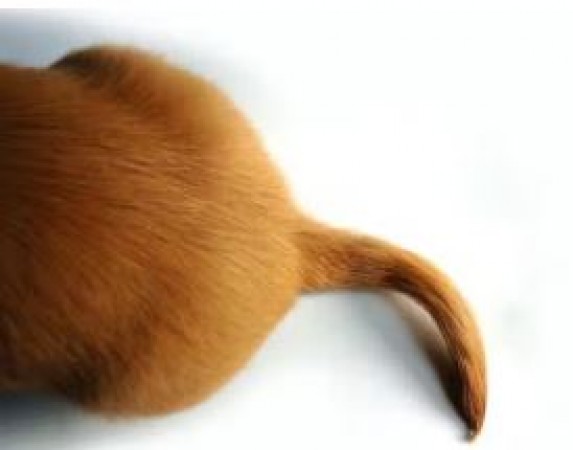
Animal tails come in all shapes and sizes, serving various purposes that are vital to the survival and daily life of the creatures that possess them. From balancing acts to social signals, let's dive into the fascinating world of tails and uncover the many advantages they offer.
Many animals rely on their tails for balance. For instance, cats use their tails to navigate narrow spaces and maintain stability when making sharp turns or landing from high jumps. It's like having a built-in balancing pole.
Kangaroos use their strong tails as a counterbalance to their long legs, allowing them to make incredible leaps with precision. The tail acts as a third leg when hopping, giving them extra stability.
For tree-dwelling animals like monkeys and squirrels, tails are essential for climbing. These prehensile tails can grasp branches, helping animals to maneuver through the treetops with ease.
Many animals use their tails to communicate with each other. Dogs, for example, wag their tails to express emotions such as happiness or excitement. A raised tail can indicate alertness or aggression.
Deer and other prey animals use their tails to signal danger to their group. A flick of the tail can warn others of a predator's presence, helping to keep the herd safe.
In the world of birds, tails are often used in courtship rituals. Peacocks fan out their colorful tail feathers to attract mates, showcasing their health and genetic quality.
Some lizards can detach their tails when threatened, leaving the wriggling tail behind to distract predators while they make their escape. This defense mechanism can be a lifesaver in dangerous situations.
Animals like pangolins have tails covered in tough scales that provide protection against predators. When threatened, they can roll into a ball, using their armored tails as a shield.
Certain animals use their tails as weapons. Crocodiles and alligators can deliver powerful blows with their tails, and scorpions use their venomous tails to subdue prey and defend against threats.
Aquatic animals like fish and dolphins rely on their tails for propulsion through the water. The powerful strokes of a dolphin's tail can propel it at high speeds, while fish use their tails for agile and precise movements.
Flying squirrels and some species of lizards have tails that help them glide through the air. These tails act as rudders, steering and stabilizing the animal during flight.
Animals such as moles and aardvarks use their tails to help them dig and burrow. The tail provides extra leverage and balance, making the digging process more efficient.
In hot climates, animals like elephants use their tails to swat away insects and dissipate heat. The movement of the tail helps to cool the body and maintain a comfortable temperature.
Arctic foxes use their bushy tails as blankets to keep warm in freezing temperatures. By wrapping their tails around their bodies, they conserve heat and stay insulated against the cold.
Some animals, like kangaroo rats, use their tails to store fat reserves. This stored fat provides essential energy during times when food is scarce, ensuring their survival.
Certain primates use their tails to carry tools or food items. This allows them to transport essential resources while keeping their hands free for climbing or other tasks.
Many animals have highly sensitive tails that can detect vibrations in their environment. This is particularly useful for ground-dwelling creatures, as it alerts them to the presence of predators or prey.
Some species, such as rattlesnakes, have tails that are sensitive to temperature changes. This helps them locate warm-blooded prey even in low-light conditions.
Animals like cats have tails with a high concentration of nerve endings, making them highly sensitive to touch. This sensory function aids in navigation and hunting.
In domesticated pets like dogs and cats, tails play a significant role in expressing emotions. Understanding these tail signals can help pet owners better communicate with and care for their furry friends.
Even in the comfort of our homes, pets use their tails for balance and coordination. Watching a cat gracefully navigate a narrow ledge is a perfect example of this.
Tails can also be a source of entertainment for pets. Cats often chase their tails in playful antics, providing both exercise and mental stimulation.
The diversity of tails across the animal kingdom is a testament to the power of evolutionary adaptation. Each species has developed a tail suited to its unique environment and lifestyle, showcasing the incredible versatility of this appendage.
Fossil records show that even ancient animals had tails with specialized functions. Studying these fossils helps scientists understand the evolutionary history and development of tails in various species.
Ongoing research continues to uncover new insights into the functions and benefits of animal tails. This knowledge not only deepens our understanding of animal behavior but also inspires innovations in robotics and prosthetics.
Tails have captured human imagination for centuries, appearing in myths and folklore around the world. From dragon tails to the tails of trickster animals, these stories reflect the awe and mystery associated with this remarkable appendage.
In art and literature, tails often symbolize strength, agility, and adaptability. They appear in various forms, from the serpentine tails of mythical creatures to the bushy tails of forest animals.
The study of animal tails has inspired technological advancements, particularly in the field of robotics. Engineers are developing robotic tails to enhance balance and stability in robots, mimicking the natural movements of animal tails.
Animal tails are much more than mere appendages; they are multifunctional tools that play crucial roles in the survival and daily life of countless species. From balance and communication to defense and locomotion, tails are truly one of nature's most versatile inventions. As we continue to study and understand these fascinating structures, we gain deeper insights into the incredible adaptability and ingenuity of the animal kingdom.
Wearing sandals also leaves marks on your feet, so follow these tricks
When was the saree worn for the first time, how did it become a part of Indian culture?